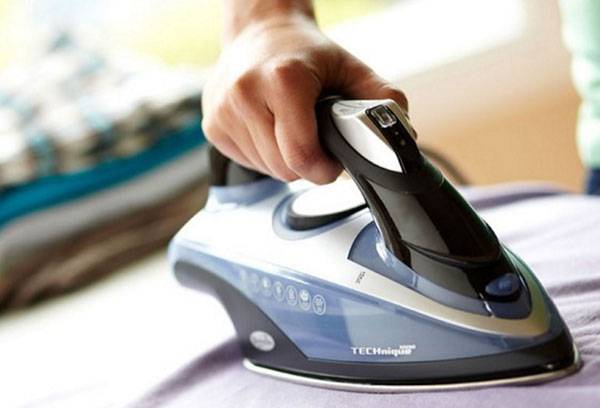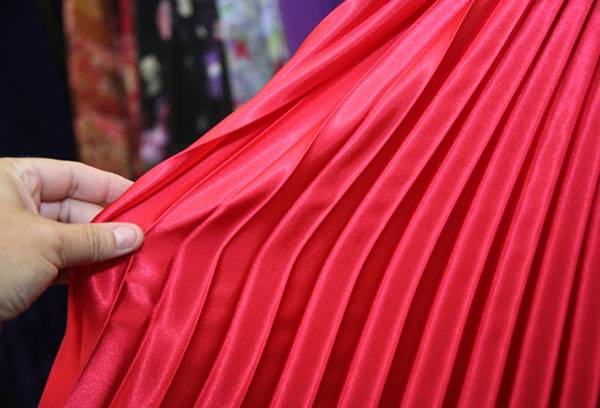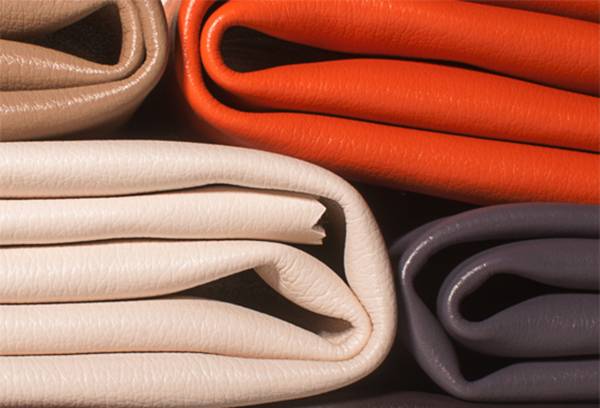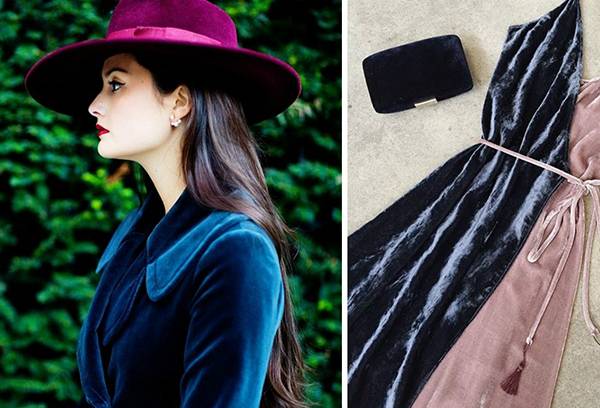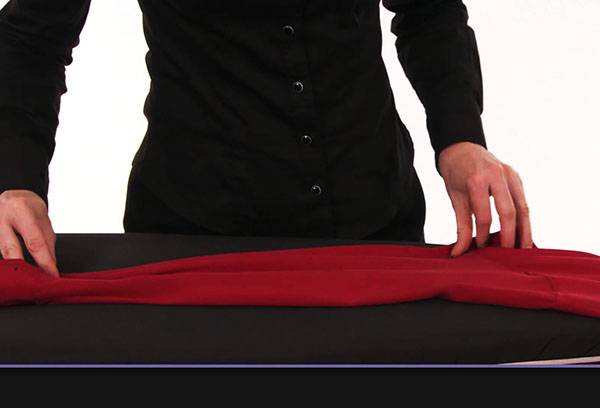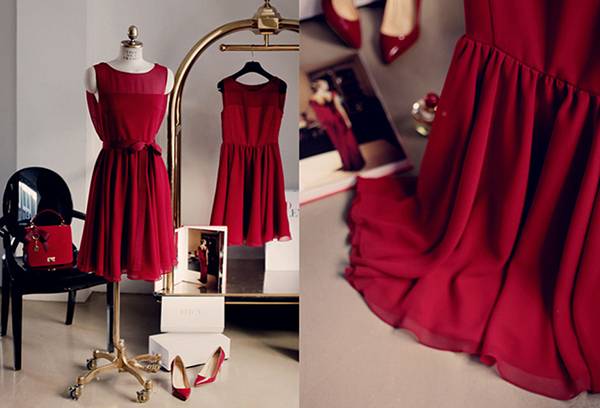How to iron dresses from different types of materials: from silk to leatherette
Content:
Do you think that in the wardrobe of a real woman there are not many dresses? Then you probably have a collection to look after. And each instance needs its own approach: washing and stroking a dress of chiffon the same way and, say, leatherette is simply unacceptable! Then how to iron products from different types of fabrics? Do not worry: we will tell you everything.
How to stroke a woolen dress
If you think that after washing and drying the risk of shrinkage of the woolen dress is gone and the clothes cannot be ruined, then you are mistaken: if you iron the woolen product incorrectly, you can deform it and completely deprive it of its presentation. What should be done to avoid all this?
- Iron the dress only through gauze or cotton cloth, while the fabric needs to be moistened a little in advance.
- Iron only from the wrong side, which, by the way, is true for most fabrics.
- Do not stretch the product while ironing, as the wool lining will take on the shape that you give it, especially if it is loose.
- Start ironing the coat from the 1st level of heating of the iron, since at the 3rd and even the 2nd you risk getting a color deformation: natural light wool may turn yellow when overheated!
- Do not be afraid to use a steamer, because the steam will not break the mating topography and will not “lick” the villi, but at the same time completely smooth the creases.
Tip
If you properly dry the dress, preventing strong creases from forming, then it will be much easier to iron it. Dry the dresses immediately on the shoulders or gently straightening them on the rope, but not throwing it over, but fixing clothespins for the seams near the collar.
How to iron a pleated dress
The joy of buying a pleated dress lasts until the first wash: forming and ironing each crease again, you can just get off the bag. That is why there are a couple of tricks.
How can you ease your task?
- Before washing, fix the folds by flashing them around the circumference when folded. If the dress with pleats is long, then it is better to make several such lines. So, putting the product on the ironing board, you can work with it in the same way as with an ordinary cloth, and you do not have to smooth the folds.
- When washing such dresses, add conditioner to avoid unnecessary creases to the maximum.
- To keep factory pleating for as long as possible, never wring or dry such dresses in a typewriter, or dry them by throwing them over a clothesline.
- Such dresses are dried, again, immediately on the hanger or with fixed clothespins for the seams near the neck.
Is it possible to apply steaming in the case of such dresses? It’s even necessary! So the folds will look even more distinctly.
How to stroke a leather dress
But with the skin, everything is a little different: this material is natural, and it “breathes”, which means that with it you can try to crank out a few tricks to smooth wrinkles without using an iron.
- The creases can go away by themselves, if you just let the dress hang for several days.
- If you don’t have much time, try ironing the dress by hanging it in the bathroom after taking a hot shower. Such steam is colder and harmless to the skin than that created by the steamer, and it straightens creases no worse.In general, when wet, the skin straightens, it is only important to wet it quite a bit, since excess moisture can lead to deformation.
- If the creases are strong, you will either have to pat the skin from the inside through gauze, or still steam it off with a steam generator, keeping it at a distance of 10-15 cm from the product.
- For very strong creases, you can also use a press: slightly heat the skin with an iron and put on it something even and heavy, such as a stack of thick books.
Tip
Leather products are usually not washed in traditional ways, so creases on them can only form from improper storage. Do not fold leather dresses or store them near batteries or heaters, as heat drains the skin, deforming the product.
How to stroke a eco-leather dress
Faux leather looks almost like real, but smoothing a dress made of this material is even more difficult! The thing is that the textile lining is essentially coated with a polymer layer similar to rubber or rubber, and it is much more difficult to remove creases on it.
- Try to prevent creases on eco-leather: these products are only shown for hand washing, drying in a fully extended position, and storage without folding.
- If the hall is formed, you should know: not a couple of days on a hanger, neither moisture, nor steam can help you.
- There is only one way out - to heat. But here you need to act very carefully: the hall can be straightened only under the influence of temperature, but if you overdo it, the leatherette will begin to melt and the dress will be ruined. That's why ironing is advised only from the inside out and only at the minimum temperature.
As for steaming, it can help, but only due to the high temperature of the steam, so using ironing to remove creases will be safer and more accurate.
How to iron a leatherette dress?
In fact, eco-leather, leatherette, artificial leather and dermantine are essentially the same thing, therefore, no matter how the dress manufacturers name the material, recommendations for ironing it will be the same.
How to stroke a velvet dress
The easiest way is to let the velvet hang in a steam-filled bath or to steam it with a steam generator, but if you decide to iron, then consider the following points.
- Under the velveteen, it is necessary to put a soft lining, for example, a terry towel, otherwise the villi will be smoothed and the fabric will lose its appearance.
- They iron the velvet only from the inside out through a pad of gauze at minimum temperatures.
By the way
When steaming velvet, do not bring the iron too close, especially if you are dealing with synthetics!
How to stroke a silk dress
Silk seems to be a very delicate material, but in fact, ironing it is even easier than synthetics. Unless, of course, follow all the rules and recommendations.
- Iron silk on the wrong side through a layer of gauze or cotton to protect the fabric.
- Do not set high temperatures when ironing silk: you can stroke the dress with high quality and at a minimum level of heating.
- Silk is smoothed better if you start to iron it a little damp.
- It is also possible to steam silk, but so that hot steam does not damage the dress, it is better to cover it with gauze, and do not bring the steamer closer than 7-8 cm.
But what if silk is still artificial? As with other synthetic understudies of natural fabrics, the rule is one: the minimum temperature, ironing from the inside and certainly laying from gauze or cotton.
How to iron a satin dress?
For a natural satin and for its artificial counterpart, the ironing rules are the same as for silk, because these fabrics, whether natural fabrics or synthetics, have similar characteristics.
How to stroke a chiffon dress
Chiffon is not capricious in ironing, if you do not start to heat the iron red-hot, but the tricks to facilitate smoothing the wrinkled chiffon begin even at the washing stage.
- Do not press the chiffon dress in the typewriter so that it wrinkles as little as possible.
- When washing, add air conditioning: so small folds and large creases practically do not form.
- Dry the chiffon product flattened and store it as well.
You can iron chiffon at minimum and medium temperatures - depending on the product - from the inside out through a gauze pad, especially if the chiffon is not natural.
Now your dresses are safe, because with our tips you definitely will not ruin them unknowingly while ironing!
